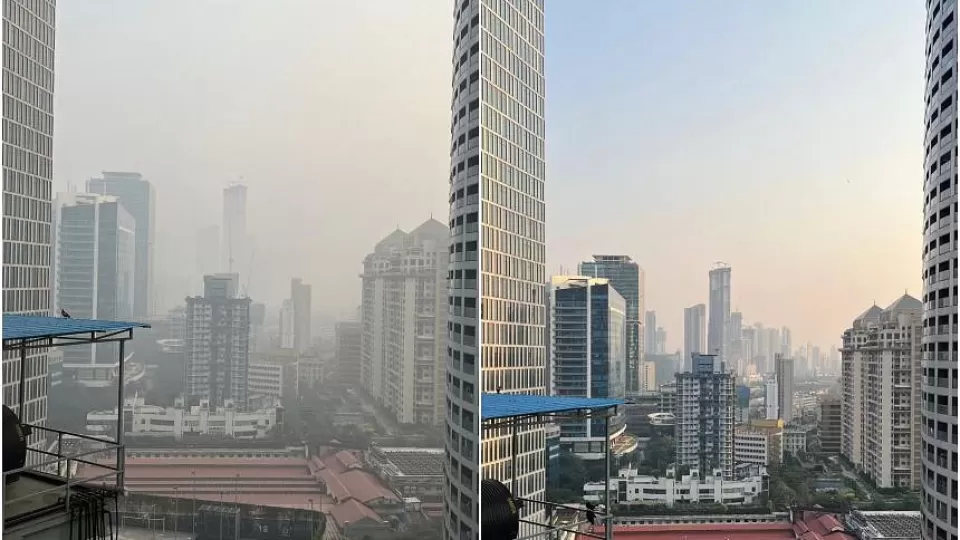December 12, 2022
NEW DELHI – News about India’s annual winter pollution crisis is mostly dominated by Delhi’s infamous bouts of smog. But last week, Mumbai, India’s financial nerve centre which lies on the coast of the Arabian Sea, hit the headlines for its deteriorating air quality, accentuating the country’s widespread pollution problem.
The city saw its overall air quality index (AQI) surpass 300 – a threshold that qualifies the air as “very poor” according to India’s measuring standards – on four consecutive days from Dec 5 to 8. On certain days, Mumbai’s pollution levels were worse than Delhi’s. The AQI in Mumbai last Friday at 8.30am was 309, compared with Delhi’s 249.
This year’s winter in Mumbai has been the most polluted in the past four years and the city had no “good” or “satisfactory” air quality days in the last 30 days, according to data from India’s System of Air Quality and Weather Forecasting And Research (Safar).
While conditions cleared up on Saturday, last week saw hospitals in Mumbai report an increase in patients coming in with respiratory problems.
The poor air quality has been attributed to a lack of incoming sea breeze and unusually low wind speeds that have failed to disperse pollutants from key sources such as vehicles and industries, besides ongoing infrastructure projects and road dust suspension. The city, with an estimated population of more than 18 million people, is witnessing several large infrastructure projects, including the expansion of its mass rapid transit system and a coastal road.
Data from Respirer Living Sciences (RLS), a private organisation which monitors air quality at around 15 locations in the city, indicates that particulate matter with a diameter of 10 microns or less (PM10) is substantially higher in the pollution mix compared with PM2.5 particles released mostly from combustion of petroleum products or wood.
Mr Ronak Sutaria, founder of RLS, said ongoing infrastructure development work is a “likely candidate” for PM10 pollution, along with road dust and other sources.
The city’s share of vehicular pollution has been rising too. A year-long Safar study, conducted between 2019 and 2020, showed vehicular emissions contributed 30.5 per cent of Mumbai’s PM2.5 particles, up from 16 per cent in 2016-17.
Mr Bhagwan Kesbhat, founder of Waatavaran, an environmental organisation that runs a clean air campaign for Mumbai, said the authorities failed to put in place a growth model that disincentivises private vehicle ownership by scaling up the public transport system and enhancing walking and cycling options.
“The ridership on Mumbai’s iconic bus network has been falling despite an increase in population and, meanwhile, private vehicles have intruded into the roads,” he said. “There is uncontrollable traffic because of an exponential increase in private vehicles.”
From 2.6 million registered vehicles in Mumbai in 2005, the number has now crossed 4.2 million, according to the state government’s latest economic survey.
A move to install flue gas desulfurisation units, which capture sulphur dioxide, at thermal power plants in and around the city has also not been fully implemented, added Mr Kesbhat.
Moreover, an effective action plan against pollution in Mumbai has been held back because of poor coordination among different agencies.
According to a report in Hindustan Times last week, a warning from the Maharashtra Pollution Control Board about an impending pollution emergency went unheeded by local municipal corporations.
The authorities in Mumbai have air quality measuring equipment installed at 20 locations across the city, but Mr Sutaria described it as “woefully inadequate” for the large and dynamic megapolis.
A densely populated city like Mumbai, according to him, needs air quality monitoring in at least 200 to 250 locations that can generate data hourly.
“This is what Mumbai really needs and Mumbai can definitely afford it,” he said.
Such an extensive monitoring system can keep an eye on local pollution sources and help create control plans for “every two to four square kilometres”, allowing the authorities to take prompt and effective action.
“It could be somebody burning a huge pile of waste in some open plot or a construction site that gets lax when they know nobody is checking on them… You can take effective action because all of these happen dynamically,” Mr Sutaria added.
“It is a combination of technology, data and regulation – these need to work in sync, but this is missing in Mumbai.”


